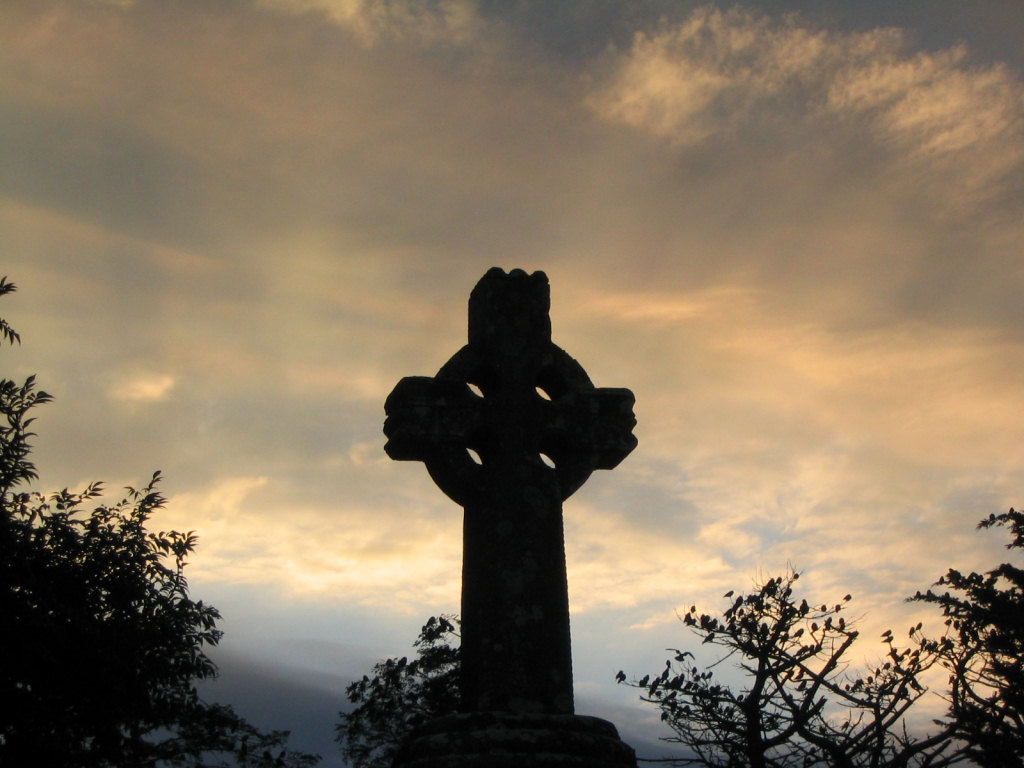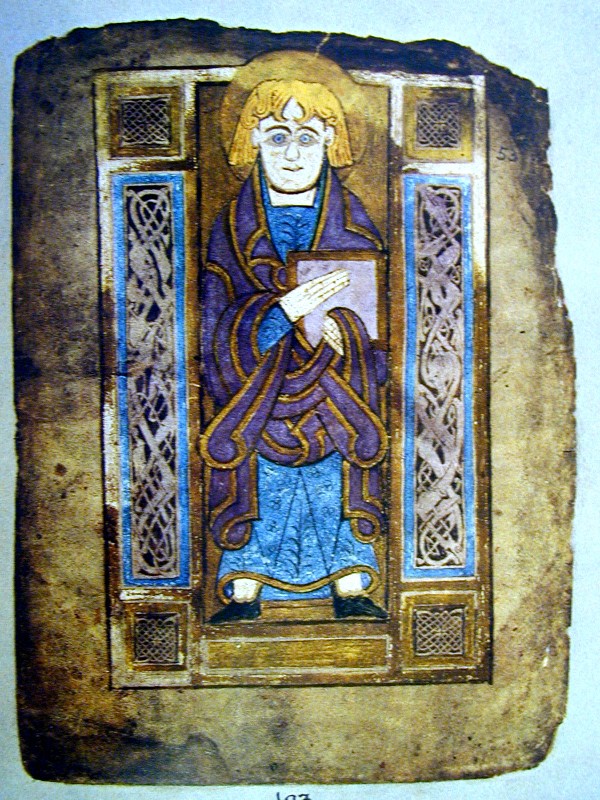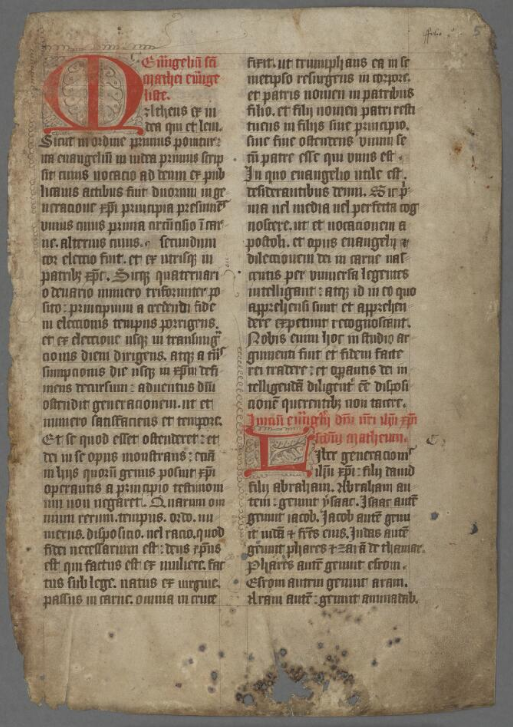|
Saint Issel
Saint Issel or Issell ( or ''Usyllt'') was a 6th-century Welsh saint in Celtic Christianity. He lived in the Kingdom of Dyfed and is principally notable as being the father of Saint Teilo. His name appears in many forms in surviving texts, but seems to have been derived from the Latin name ''Auxilius''. The Book of Llandaff gives his wife as Guenhaf daughter of Liuonui. He was the father of Saint Teilo and the Anauved who married King Budic II of Brittany, Budig of Armorica and bore three saints. The oldest genealogies present him as also the father of Cynllo, Saint Cynllo. He is the patron saint of the parish church at Saundersfoot () but probably not the patron of Haroldston St Issells which was probably corrupted from an original dedication to his grandson Isfael, Saint Ismael. References 6th-century Christian saints Medieval Welsh saints History of Pembrokeshire People from Pembrokeshire {{wales-hist-stub ... [...More Info...] [...Related Items...] OR: [Wikipedia] [Google] [Baidu] |
Saundersfoot
Saundersfoot (; Old Welsh: ''Llanussyllt'') is a large village and community (and former electoral ward) in Pembrokeshire, Wales. It is near Tenby, both being holiday destinations. Saundersfoot lies in the Pembrokeshire Coast National Park and on the Pembrokeshire Coast Path. The village population was recorded as 2,500 (rounded to the nearest 100) in the 2021 census. History Saundersfoot was known in medieval Wales as ''Llanussyllt'', and after the Norman conquest as ''St. Issels'' (sometimes ''Issells''), both after the parish church dedicated to the Welsh saint Issel. It appeared as ''St. Tissels'' on a 1578 parish map of Pembrokeshire. Its bishop or abbot was considered one of the seven principal clerics of Dyfed under medieval Welsh law. It was a substantial parish in 1833 with 1,226 inhabitants. John Marius Wilson described the village and parish as St Issells in his 1870–72 '' Imperial Gazetteer of England and Wales''. The church lies in a dell to the north of Saund ... [...More Info...] [...Related Items...] OR: [Wikipedia] [Google] [Baidu] |
Kingdom Of Dyfed
The Kingdom of Dyfed (), one of several Welsh petty kingdoms that emerged in 5th-century sub-Roman Britain in southwest Wales, was based on the former territory of the Demetae (modern Welsh ''Dyfed''). The royal line was founded by Irish settlers in the 5th century. After the Norman invasion of Wales Dyfed was incorporated into Pembrokeshire. The name was resurrected for the now-defunct administrative area called Dyfed as well as in the names of some regional organisations such as Dyfed–Powys Police. Dyfed may have originally occupied the area that bordered the rivers Teifi, Gwili and Tywi, and included contemporary Pembrokeshire, the western part of contemporary Carmarthenshire, and with the town of Carmarthen. Dyfed eventually comprised at least seven cantrefi: Cemais, Deugleddyf, Emlyn, Cantref Gwarthaf, Pebidiog, Penfro and Rhos, with an approximate area of about . During times of strength, the kingdom expanded to additionally cover the Ystrad Tywi ... [...More Info...] [...Related Items...] OR: [Wikipedia] [Google] [Baidu] |
Celtic Christianity
Celtic Christianity is a form of Christianity that was common, or held to be common, across the Celtic languages, Celtic-speaking world during the Early Middle Ages. The term Celtic Church is deprecated by many historians as it implies a unified and identifiable entity entirely separate from that of mainstream Western Christendom. For this reason, many prefer the term Insular Christianity. As Patrick Wormald explained, "One of the common misconceptions is that there was a ''Roman'' Church to which the ''Celtic'' Church was nationally opposed." Some writers have described a distinct "Celtic Church" uniting the Celts (modern), Celtic peoples and distinguishing them from adherents of the Latin Church, Roman Church, while others classify Celtic Christianity as a set of distinctive practices occurring in those areas. Varying scholars reject the former notion, but note that there were certain traditions and practices present in both the Irish and British churches that were not seen ... [...More Info...] [...Related Items...] OR: [Wikipedia] [Google] [Baidu] |
Celtic Rite
The term "Celtic Rite" is applied to the various liturgical rites used in Celtic Christianity in Britain, Ireland and Brittany and the monasteries founded by St. Columbanus and Saint Catald in France, Germany, Switzerland, and Italy during the Early Middle Ages. The term is not meant to imply homogeneity; instead it is used to describe a diverse range of liturgical practices united by lineage and geography. Welsh church Before the 8th century AD there were several Christian rites in Western Europe. Such diversity of practice was often considered unimportant so long as Rome's primacy was accepted. Gradually the diversity tended to lessen so that by the time of the final fusion in the Carolingian period the Roman Rite, its Ambrosian variant, and the Hispano-Gallican Mozarabic Rite were practically all that were left. British bishops attended the Council of Arles in A.D. 314 and the Council of Rimini in 359. Communication with Gaul may be inferred from dedications to St. M ... [...More Info...] [...Related Items...] OR: [Wikipedia] [Google] [Baidu] |
Saint Teilo
Saint Teilo ( or '; Wainewright, John. in ''The Catholic Encyclopedia'', Vol. XIV. Robert Appleton Co. (New York), 1912. Accessed 20 July 2013. or '; or '; – 9 February ), also known as Eliud, was a British Christian monk, bishop, and founder of monasteries and churches. He was from Penalun ( Penally) near Tenby in Pembrokeshire, south Wales. Reputed to be a cousin, friend, and disciple of Saint David, he was bishop of Llandaff and founder of the first church at Llandaff Cathedral, where his tomb is. He also founded Llandeilo Fawr, as well as Penally Abbey at his place of birth. Biography St Teilo may have been known as Eliau or Eilliau in Old Welsh. He was born at Penalun (Penally) around the year 500. Teilo's father is usually identified as Ensich ap Hydwn, and he was thought to be the brother of Anowed, and the uncle of Saints Ismael and Euddogwy. Rees, W. J. (trans.) ''Liber Landavensis''pp. 351370 ff Welsh MSS. Society (Llandovery), 1840. Accessed 2 ... [...More Info...] [...Related Items...] OR: [Wikipedia] [Google] [Baidu] |
Book Of Llandaff
The Book of Llandaff (; , ', or '), is the cartulary of the cathedral of Llandaff, a 12th-century compilation of documents relating to the history of the diocese of Llandaff in Wales. It is written primarily in Latin but also contains a significant amount of Old and Middle Welsh names and marginalia. History The work was compiled around 1125 by an unknown official at Llandaff Cathedral. It contains numerous records covering five hundred years of the diocese's history, including the biographies or ''Lives'' of Saints Dubricius, Teilo and Oudoceus and, most importantly for historical research, 149 land-grant charters. These Llandaff Charters give details of property transfers to the cathedral from various local kings and other notaries, from the late 6th to the late 11th century. (About 40% belong to the 8th century and 20% to the late 9th century.) The manuscript includes the document ''Fraint Teilo'', in the original Middle Welsh with facing Latin version, an important ... [...More Info...] [...Related Items...] OR: [Wikipedia] [Google] [Baidu] |
Budic II Of Brittany
Budic II (; or '; ), formerly known as Budick, was a king of Cornouaille in Brittany in the late 5th and early 6th centuries. He was father of Hoel as well as several Celtic saints. Life Budic II was born in Cornouaille to a member of its royal family, possibly Erich of Brittany.Ford, David Nash"Erich"at ''Early British Kingdoms''. 2001. Retrieved 2 December 2014. He was named after his uncle Budic I of Brittany. Budic II succeeded to the throne, , but was expelled by a cousin and fled to the court of King Aircol Lawhir of Dyfed, where another cousin Amon Ddu was employed. There, he wed Anowed or Arianwedd, the sister of Saint Teilo. After the death of his usurping relative, he returned to Cornouaille to claim the Breton throne, later joined by Saint Teilo whom he reputedly persuaded to rid the area of a terrible dragon that had been terrorising the countryside. Teilo was able to subdue the beast and tied it to a rock in the sea. The date of his death is uncertain. Some s ... [...More Info...] [...Related Items...] OR: [Wikipedia] [Google] [Baidu] |
Armorica
In ancient times, Armorica or Aremorica (Gaulish: ; ; ) was a region of Gaul between the Seine and the Loire that includes the Brittany Peninsula, and much of historical Normandy. Name The name ''Armorica'' is a Latinized form of the Gaulish toponym , which literally means 'place in front of the sea'. It is formed with the prefix ''are''- ('in front of') attached to -''mori''- ('sea') and the feminine suffix ''-(i)cā'', denoting the localization (or provenance). The inhabitants of the region were called ''Aremorici'' (sing. ''Aremoricos''), formed with the stem ''are-mori''- extended by the determinative suffix -''cos''. It is glossed by the Latin ''antemarini'' in Endlicher's Glossary. The Slavs use a similar formation, ''Po-mor-jane'' ('those in front of the sea'), to designate the inhabitants of Pomerania. The Latin adjective ''Armoricani'' was an administrative term designating in particular a sector of the Roman defence line in Gaul in Late Antiquity, the ''Tractus Ar ... [...More Info...] [...Related Items...] OR: [Wikipedia] [Google] [Baidu] |
Cynllo
Saint Cynllo () is a Britons (Celtic people), British saint, who lived in the late 5th and early 6th centuries, generally described as a brother of Saint Teilo. Cynllo was known for "...the sanctity of his life and the austerity of his manners." Life Cynllo is variously described in the genealogical ''Bonedd y Saint'' as the son of Saint Issel, Usyllt and brother of Teilo. Later genealogies have him a grandson of Coel Hen. Arthur Wade-Evans, Wade-Evans thought he should be identified with ''Kentinlau'' who accompanied Saint Cadfan from Brittany to Ceredigion. References to him as ''Cynllo Vrenin'' (Cynllo the King) suggest that he was in possession of his ancestral dominions before devoting himself to religious life. Cynllo's knee imprints, made as he said his devotions, are said to exist in a rock, near the farm Felin Gynllo, which lies just outside Llangoedmor in Ceredigion. A Middle Welsh poem, ''The Consolations of Elffin'', attributed to the infant Taliesin includes the lin ... [...More Info...] [...Related Items...] OR: [Wikipedia] [Google] [Baidu] |
Isfael
Isfael or Ismael (), often anglicised as Ishmael, was a 6th-century medieval Welsh bishop of Rhos and saint. He was allegedly also a Breton prince of Armorica. Although his anglicized name invites association with the Biblical Ishmael, Isfael is actually a native Welsh name (or even epithet) meaning 'under prince'. Isfael was said to have been the son of Budig ap Cybydan, a native of Cornouaille and eventual king of Armorica, and the brother of the martyr Tyfei and Bishop Euddogwy (Oudoceus) of Llandaff. His mother may have been Arianwedd or Anowed, the sister of Saint Teilo. In Rhygyfarch's hagiography, Isfael was said to have been one of the three principal disciples of Dewi Sant;Sharp, Richard & al. (trans.) "Rhygyfarch's 'Life' of St David" in ''St David of Wales: Cult, Church and Nation''p. 121 Boydell Press, 2007. Accessed 26 Mar 2013. in the Book of Llandaff, he is also included among the students of Dubricius and Teilo and said to have succeeded David as the bi ... [...More Info...] [...Related Items...] OR: [Wikipedia] [Google] [Baidu] |
6th-century Christian Saints
The 6th century is the period from 501 through 600 in line with the Julian calendar. In the West, the century marks the end of Classical Antiquity and the beginning of the Middle Ages. The collapse of the Western Roman Empire late in the previous century left Europe fractured into many small Germanic kingdoms competing fiercely for land and wealth. From the upheaval the Franks rose to prominence and carved out a sizeable domain covering much of modern France and Germany. Meanwhile, the surviving Eastern Roman Empire began to expand under Emperor Justinian, who recaptured North Africa from the Vandals and attempted fully to recover Italy as well, in the hope of reinstating Roman control over the lands once ruled by the Western Roman Empire. Owing in part to the collapse of the Roman Empire along with its literature and civilization, the sixth century is generally considered to be the least known about in the Dark Ages (historiography), Dark Ages. In its second golden age, the ... [...More Info...] [...Related Items...] OR: [Wikipedia] [Google] [Baidu] |
Medieval Welsh Saints
In the history of Europe, the Middle Ages or medieval period lasted approximately from the 5th to the late 15th centuries, similarly to the post-classical period of World history (field), global history. It began with the fall of the Western Roman Empire and transitioned into the Renaissance and the Age of Discovery. The Middle Ages is the middle period of the three traditional divisions of Western history: classical antiquity, the medieval period, and the modern period. The medieval period is itself subdivided into the Early Middle Ages, Early, High Middle Ages, High, and Late Middle Ages. Population decline, counterurbanisation, the collapse of centralised authority, invasions, and mass migrations of tribes, which had begun in late antiquity, continued into the Early Middle Ages. The large-scale movements of the Migration Period, including various Germanic peoples, formed new kingdoms in what remained of the Western Roman Empire. In the 7th century, North Africa and the ... [...More Info...] [...Related Items...] OR: [Wikipedia] [Google] [Baidu] |





